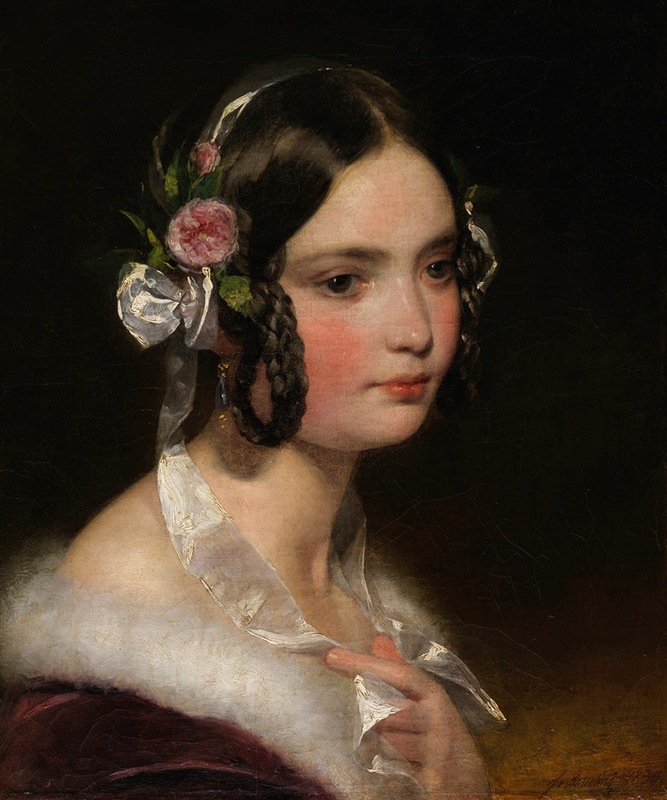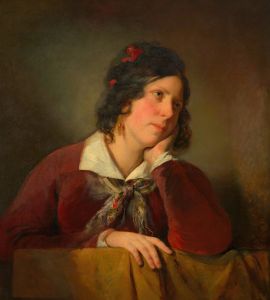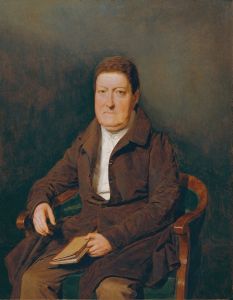
Bildnis eines Mädchens
A hand-painted replica of Friedrich von Amerling’s masterpiece Bildnis eines Mädchens, meticulously crafted by professional artists to capture the true essence of the original. Each piece is created with museum-quality canvas and rare mineral pigments, carefully painted by experienced artists with delicate brushstrokes and rich, layered colors to perfectly recreate the texture of the original artwork. Unlike machine-printed reproductions, this hand-painted version brings the painting to life, infused with the artist’s emotions and skill in every stroke. Whether for personal collection or home decoration, it instantly elevates the artistic atmosphere of any space.
Friedrich von Amerling was a prominent Austrian portrait painter in the 19th century, known for his detailed and realistic depictions of his subjects. One of his notable works is "Bildnis eines Mädchens," which translates to "Portrait of a Girl." This painting exemplifies Amerling's skill in capturing the delicate features and expressions of his sitters, a hallmark of his artistic style.
"Bildnis eines Mädchens" is a fine example of Amerling's ability to blend realism with a sense of idealized beauty. The painting features a young girl, whose serene expression and gentle demeanor are captured with meticulous attention to detail. Amerling's use of light and shadow adds depth to the portrait, highlighting the girl's facial features and the texture of her clothing. The background is typically understated, ensuring that the viewer's focus remains on the subject.
Amerling was influenced by the Biedermeier period, which emphasized a return to simplicity and a focus on the domestic and the personal. This influence is evident in "Bildnis eines Mädchens," as the painting reflects a sense of intimacy and personal connection with the subject. The Biedermeier style often celebrated the beauty of everyday life, and Amerling's work is a testament to this aesthetic.
Born in Vienna in 1803, Friedrich von Amerling studied at the Academy of Fine Arts in Vienna and later in Prague. He further honed his skills in London and Paris, where he was exposed to various artistic movements and techniques. Amerling's travels and studies greatly influenced his style, allowing him to incorporate elements of Romanticism and Realism into his work. By the time he painted "Bildnis eines Mädchens," Amerling had established himself as one of the leading portrait artists in Austria.
Throughout his career, Amerling received numerous commissions from the Austrian aristocracy and bourgeoisie, solidifying his reputation as a sought-after portraitist. His ability to capture the essence of his subjects made his portraits highly desirable. "Bildnis eines Mädchens" is a reflection of his mastery in portraying the subtleties of human expression and character.
Amerling's contribution to art extends beyond his portraits. He was a member of the Vienna Künstlerhaus and received several honors for his work, including being knighted by Emperor Franz Joseph I. His legacy is preserved in various art collections and museums, where his works continue to be admired for their technical proficiency and emotional depth.
In summary, "Bildnis eines Mädchens" by Friedrich von Amerling is a quintessential example of 19th-century portraiture, characterized by its attention to detail, use of light, and emotional resonance. Amerling's work remains a significant part of Austrian art history, celebrated for its beauty and craftsmanship.


















